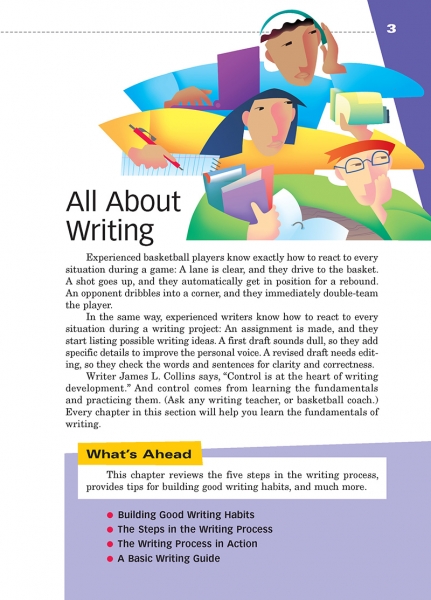Page 003 from

Start-Up Activity
Read the chapter opener aloud to your class. Then take a poll:
- How many of you love a specific sport and play it well?
- How many of you know how to play an instrument?
- How many of you have another hobby that has taken a lot of your time and energy?
Then lead a discussion about how becoming good at any activity just requires practice and patience. Writing is just the same. Even if writing feels like a real challenge sometimes, students can learn specific strategies that will make writing much easier—and more effective. This chapter gives students an overview of the process that makes writing work well.
Think About It
"Practice puts brains in your muscles."
—Sam Snead

Start-Up Activity
Read the chapter opener aloud to your class. Then take a poll:
- How many of you love a specific sport and play it well?
- How many of you know how to play an instrument?
- How many of you have another hobby that has taken a lot of your time and energy?
Then lead a discussion about how becoming good at any activity just requires practice and patience. Writing is just the same. Even if writing feels like a real challenge sometimes, students can learn specific strategies that will make writing much easier—and more effective. This chapter gives students an overview of the process that makes writing work well.
Think About It
"Practice puts brains in your muscles."
—Sam Snead